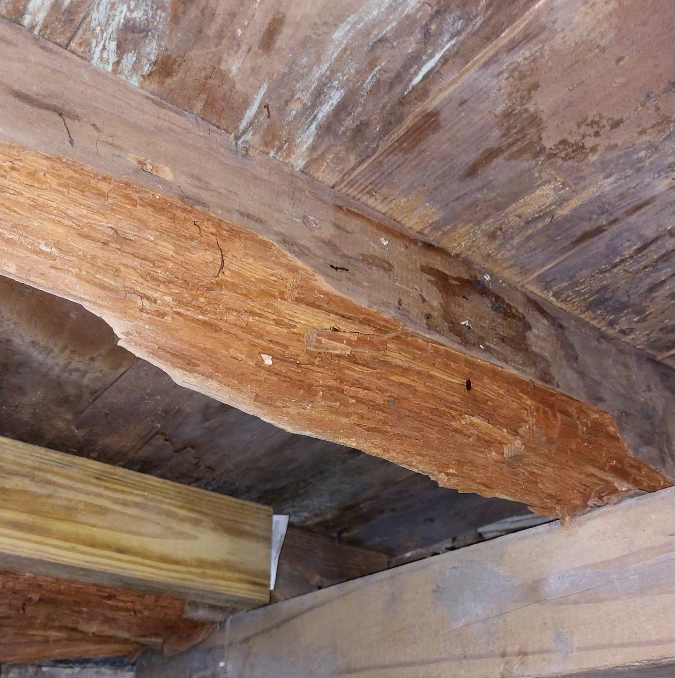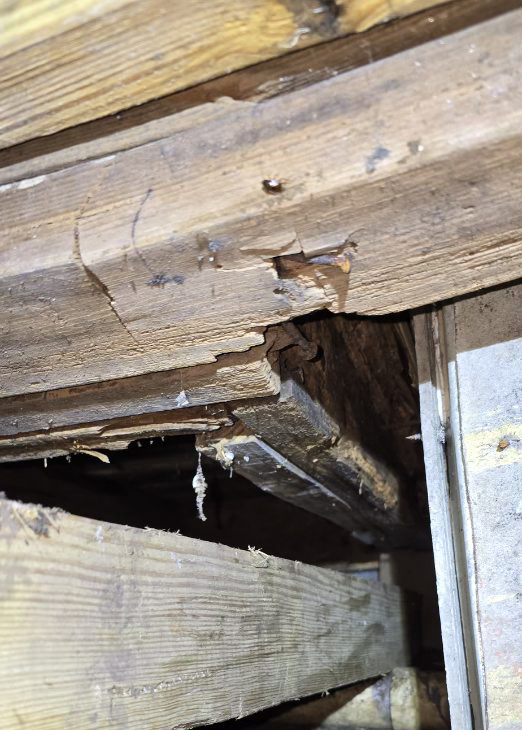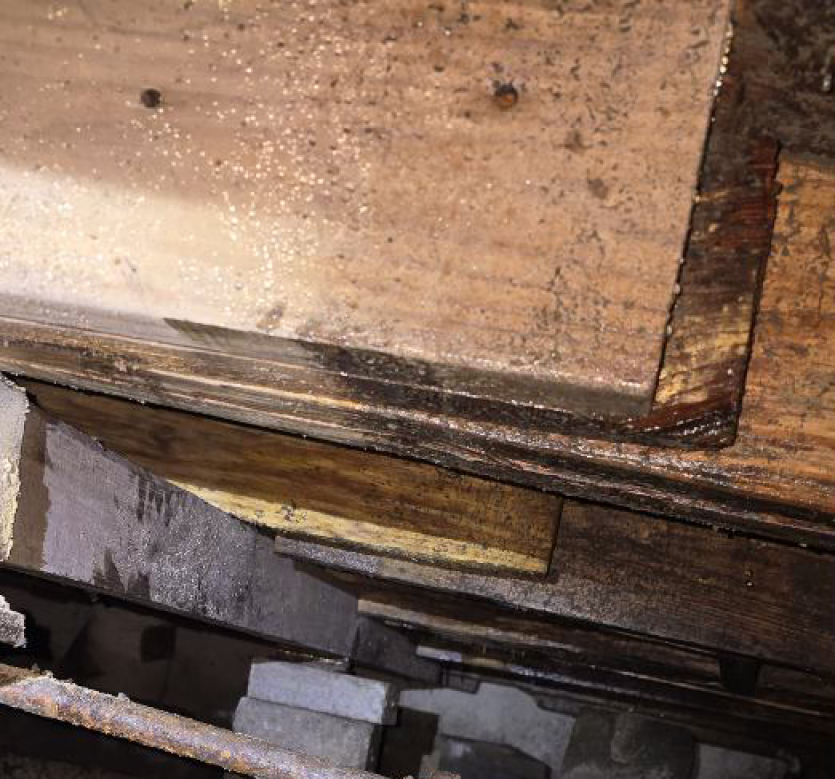For many homeowners, the crawl space is an often overlooked part of their home. A crawl space helps provide access for plumbers to work on your plumbing, electricians access your electrical systems, and inspectors take a better look at your pier and beam foundation. Unfortunately, pier and beam foundation issues can go unnoticed in your crawl space.
By recognizing the warning signs of pier and beam foundation issues early, it can prevent costly repairs in the future. In this blog, we will help define a crawl space, how it affects your pier and beam foundation, and signs to look out for when you are having pier and beam foundation problems.
What Is a Crawl Space?
A crawl space is a short clearance unfinished area beneath a home or structure. It is typically between one and three feet high. Contractors often need to crawl to access the pier and beam foundation if they are doing any work on your home. Its main purpose is to create a buffer between the home’s flooring and the bare ground to provide access to a home’s utilities setup. A crawl space is not meant to be a livable space.
Benefits of a Crawl Space For Pier and Beam Foundation
If you have a pier and beam foundation, this helps prevent direct contact with the soil. When a foundation does not have a crawl space it can cause moisture buildup and foundation damage from wood making contact with moisture. A crawl space also helps with access to utilities, making home repair cheaper and more efficient. There is an added benefit as it regulates humidity levels by providing ventilation. A crawl space also helps insulate the internal temperature of your home helping reduce the cost of cooling or heating.
Cons of a Crawl Space
If a crawl space is not properly sealed off it can cause issues if moisture gets trapped in. This could lead to mold to build up. Additionally, there is an adverse effect. If a pier and beam foundation allows for too much ventilation it can increase the risk of pests like rodents and insects getting into your crawl space that could lead to issues.
How a Crawl Space Affects Your Foundation
Since a crawl space sits directly beneath your home, its condition directly impacts the foundation’s stability. Issues like excess moisture, poor drainage, and structural damage in a crawl space can lead to major foundation problems.
Always make sure you have your crawl space inspected. If you capture potential issues early it can prevent more extensive damage and costly repairs.
Common Causes of Crawl Space Foundation Issues
Crawl space foundation problems don’t happen overnight. They occur over a long period of exposure to moisture, poor water drainage, and soil conditions. Here are some of the most common reasons why.
1. Poor Drainage
Water is one of the biggest threats to your pier and beam foundation. If your crawl space does not have proper drainage or poor waterproofing. It can become damp and humid. This leads to mold growth, wood rot, and rust.
Moisture can come from multiple fronts. It can come from clogged or broken gutters that drain directly into your crawl space, Improper leveling or shifting soil, and a leaky pipe or plumbing issue causing water to pool in your crawl space.
2. Improper Construction or Settling
Improperly constructed piers in your crawl space can lead to issues in your pier and beam foundation. If your foundation was not properly installed, it could shift the beams and cause your flooring to be unlevel. Soil settling overtime can also have a similar effect. If you own an older home, your home may have already experienced the brunt of the movement that is caused by settling. In extreme cases, shifting beams can cause an unsafe living area, but in most cases you will see the signs before it gets to that extreme.
3. Soil Movement and Erosion in Fort Worth and Dallas
The type of soil beneath your home plays a role in foundation stability. If you live in Dallas or Fort Worth, Texas, expansive clay soils can absorb water and expand, then shrink when dry. Texas often has long periods of drought which contracts the soil, but once a rainy season comes by, this causes the soil to expand and shift your foundation. This continuous cycle can cause the foundation to shift and move the piers your foundation stands on.
4. Pest Infestations
A damp crawl space is oftentimes the perfect environment for pests, especially termites and rodents. Termites are insects that harvest wood and overtime degrade the piers and beams internally. This erodes away at support beams causing extensive damage.
Rodents may burrow into your crawl space as a place for refuge and start to consume your insulation and wiring, leading to additional home damage. If not managed properly, these pests can compromise your crawl space.
How To Spot Foundation Issues in a Crawl Space
Identifying issues with your pier and beam foundation early can help save thousands of dollars in repair costs. In our years of experience here are some of the following warning signs you should look out for, if you are ever inspecting your home’s pier and beam foundation.
1. Cracks in Walls
One of the easiest identifiers of a damaged pier and beam foundation is if you notice cracking on your walls or floors. You can identify these cracks near doorways, windows, or corners of your home. If you have a newer home this may be a sign of settling, but if you notice the cracks getting bigger over time this is a sign that there is an issue with your foundation.

2. Uneven or Sagging Floors
A compromised crawl space can cause floors to feel uneven in certain areas. If you walk through your home and notice sloping floors where it was once stable and solid this could be a sign your foundation needs attention.
3. Musty Odors and High Humidity
If you notice pests like insects or rodents around or in your home. It is possible that your crawl space may be the source of the problem. Pests often enter through small entrances of your home’s foundation and cause havoc if left unchecked.
Smell may also be a signifier. If you notice a musty smell that gets into your home it could be coming from the crawl space. If the smell is persistent for weeks of dry weather, it could be from a water leak and moisture causing humidity, mildew, or mold growth inside your house. This moisture can cause mold or wood rot that would not be healthy for your foundation.
4. Increased Pest Activity
If you notice pests like insects or rodents around or in your home. It is possible that your crawl space may be the source of the problem. Pests often enter through small entrances of your home’s foundation and cause havoc if left unchecked.
How to Inspect Your Crawl Space for Foundation Problems
If you are a homeowner or are planning on purchasing a home soon you might want to plan on having your crawl space inspected or look at yourself. By taking these measures it can help you identify these issues before they become costly repairs. Here are a few tips on what to look out for we recommend:
1. Do a Visual Inspection
- Use a flashlight to look for cracks, moisture, rust, or mold.
- Check the wooden support beams for signs of wood rot or damage from insects.
- Inspect the crawl space walls and floors for standing water, leaks, and damp spots. If you live in a humid area, water could take some time to dry off.
- If you suspect termite damage, you could test the wood by poking a screwdriver into the wood. If it just creates a dent, your wood is fine, but if it goes through, the beam could be compromised.

2. Feel for Changes in Flooring
- Walk through your home and notice if any areas feel uneven or unsupported. An easy test you could do is get a smooth pen or pencil and place it on the floor. If it remains in the same position your floor is not sloping, but if it does you should have a professional take a look.
3. Are there any Unusual Smells
- If you are noticing a musty smell around your home you should use this as a sign to check your foundation. Rotting wood and mold will have a smell. This could be a sign that your foundation needs help.
4. Monitor Your Doors and Windows
- If you notice that your doors or windows are suddenly difficult to open or close, the foundation may be settling unevenly and need to be inspected.
- Look for gaps or cracks around frames, which can indicate structural movement.
5. Call Maestros Foundation Repair
While homeowners can spot basic warning signs, a professional foundation inspection can provide a clear pathway for the next steps. We test the extent of the damage by using tools like moisture meters, laser levels, and other state-of-the-art tests to detect problems early and clearly. By the end of one of our free inspections you will be able to know what exactly needs to be done to get your foundation corrected.
Why DIY Repairs Are A Bad Idea
Most foundation problems will require specialized techniques to get your foundation corrected. Oftentimes, these tools may not make sense if you are doing your own home foundation repair. Additionally, many people will not have the expertise of knowing if their repair fully corrected a problem. These temporary fixes are not permanent and lead to wasted time and money. Learn more about why DIY home foundation repair would be a costly mistake.
Why Maestro’s Foundation Repair Can Help
We at Maestro’s Foundation Repair offer thorough inspections to determine the exact cause of your foundation issues and provide you with a customized repair for your home. We provide a warranty that comes along with our repair. In addition to this perk, we also have financial options available for all types of homeowners situations.Your crawl space plays a crucial role in maintaining your home. If left unchecked, like water damage, mold, or pest can lead to pier and beam foundation problems that put your home at risk. Always look out for the common signs of foundation issues like uneven floors, cracks on walls, or musty odors. If you suspect crawl space or foundation problems, contact Maestro’s Foundation Repair today for a professional assessment and long-lasting solutions.
